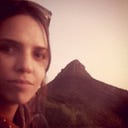As a city strategist an “urbanist” I shocked a few people when I made the move to Paarl — in many of my Capetonian friends’ minds — a small town that is not quite as interesting as Franschoek or Stellenbosch and not quite far enough away to make it a weekend away destination. (Actually, I’ve even heard similar comments made by people living in posh estates in the area — who’d rather drive into one of those towns, or the City, than into Paarl for an evening out or a weekend activity.)
There are two reasons I moved to Paarl — mainly, I fell in love with and married an Afrikaans man from here. Secondly, I have spent enough time here to be excited about it.
People are friendly, the streets are clean (apart from the areas plagued by dumping), I’ve enjoyed a lot of the coffee shops and restaurants, and I feel safe to walk to them (Before some of the tannies get worried — feeling safe is relative, you must realise I have moved from the centre of Cape Town CBD — so, being able to walk everywhere is non-negotiable for me, and safety is definitely, um, negotiated, in that environment).
I’ve been puzzled, however, by the “stuckness” of Paarl.
Despite a road network perfect for buses and bicycles (which we all love in pictures of famous cities like Paris or Barcelona, and which the world needs us to use if we are to get real about climate change), I see wealthy people in cars and poor people on foot (until you’re in the east — dan is die taxis toeggelaat).
Mostly, white people still live here, coloured people over there, and black people in another area. There are sites perfectly situated for integrated housing projects that would bring people closer together, with not only no houses on them, but no construction and no sign of any planned projects to come.
Paarl has expanded rapidly — becoming, essentially one urban area with Wellington, and more and more gated estates approved, now with more drive-to-malls. It doesn’t make sense — an area of this size can serve a “down town”. Lady Grey Street has potential to be one of South Africa’s most vibrant and integrated “strips”, employing many people in a healthy day and night time economy; and housing young professionals and the emergent Paarlites.
I love reading The Village Guy’s posts on social media. He celebrates people from Paarl and Wellington and shows us examples of people coming together and doing interesting and forward-looking things.
This weekend, he posted about there being 2 800 dollar millionaires in Paarl, Stellenbosch and Franschoek, and 2 dollar billionaires. (Edit: here is the report, which also states 160 multi-dollar millionaires)
I know that there are a lot of charitable projects that do occur — and charity has its place in filling the holes that social change isn’t reaching. But I really was left wondering: how can we have people hungry, turning to crime, living without proper housing or services, and this much wealth?
This morning, I upset myself (and probably some others) intervening when a private security guard was edging beyond his legal mandate to detain a young man who had stolen a laptop through a window — and into the realm of assault and humiliation.
Putting myself in this young mans shoes (well, actually, he didn’t have proper shoes) — I imagined the fear he must be experiencing. The trauma, still known from scenes of what white men did to black men during Apartheid.
As a former social worker, I look at this moment and think: here is a moment where we have a choice — we can perpetuate that cycle of trauma, fear, hatred and un-knowing (on both sides). Or, we can heal. Choose a restorative approach. Not that justice must not be done, but it can be achieved through respect, dignity and mutual concern.
What is stopping us, Paarl? When I walk in the Arboretum on a Sunday morning I see of glimmer of what can be — so many different types of people, enjoying a shared space with their preferred culture, leisure or religion. Showing each other respect — albeit still with caution and separation.
I believe if we find ways to create more spaces of multi-cultural interaction — if we get together to fix that dumping problem, or paint that wall, or host a small festival, or speak out when we think we are making a choice to repeat trauma instead of making a restorative choice; we will heal — and before long we will find ourselves designing plans for housing on that site, and sitting side by side on an efficient bus.
